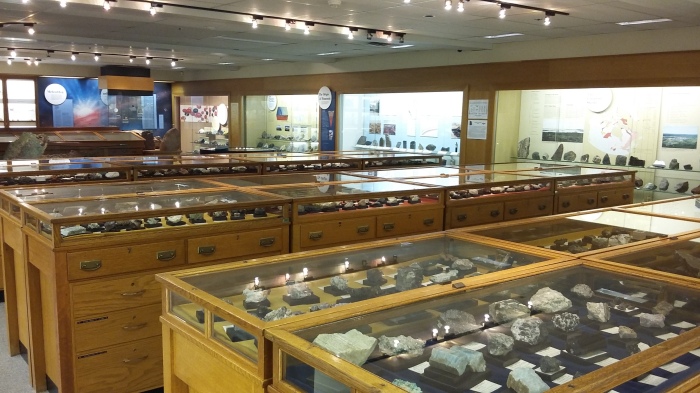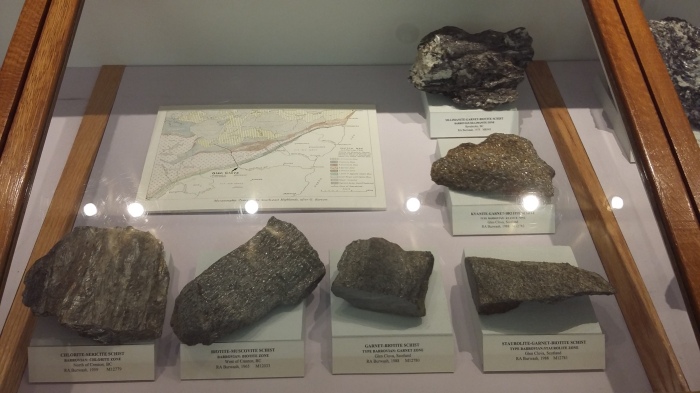Late last month I found myself in Edmonton, with a free day prior to the Three Societies meeting (22-25 June). Touring the University of Alberta campus, I wandered into the basement of the Earth Sciences building, to discover the Mineralogy and Petrology Museum (http://www.eas.museums.ualberta.ca/mineralogyandpetrologycollection.aspx). Visitors to the small museum are greeted by a colossal sample of Albertan copper – continue to explore and numerous treasures present themselves. For instance, the Toluca meteorite, discovered in 1776 and at some 4.6 billion years old advertised as the ‘oldest item you will ever touch.’

A moment from the history of science is captured in a display on the work of George Barrow (1853-1932). A geologist and surveyor, Barrow is best known for his work in Scotland from 1884 to 1900. Mapping in Glen Clova (northeastern Scotland), Barrow noticed a pattern of mineral occurrences. Subsidiary minerals – chlorite, biotite, garnet, staurolite, kyanite and sillimanite occurred in six distinct zones (see below). Barrow theorised that these differences indicated different degrees of metamorphism (the intensity of heat and pressure) that had occurred in each region. He had discovered a new tool for mapping metamorphic rocks. Zones of progressive metamorphism have subsequently become known as ‘the Barrovian sequence’ or ‘Barrovian zones’.

Yet according to David Oldroyd’s entry on Barrow in the Dictionary of National Biography (http://www.oxforddnb.com/view/article/56917), all did not end well. Barrow used his discovery to declare that the main metamorphic regions of Scotland all came from the same source: each had simply been ‘metamorphosed to different degrees.’ Oldroyd tells us that Barrow had a certain ‘tenacity’ regarding this theory, which caused him to fall out with his colleagues. Eventually, it was agreed ‘to move him from Scotland to the less controversial geology of the English midlands.’

The Mineralogy and Petrology Museum is undoubtedly a hidden gem, which holds fascinating specimens and captures intriguing moments from the history of geology. Founded in 1912 by the first Chair of the Geology department, Dr. John A. Allen, the museum now functions as both a teaching space for students and a public attraction (for tourists like me)! If you ever find yourself in the Edmonton area, the museum and the neighboring Paleontology Museum are well worth a visit!